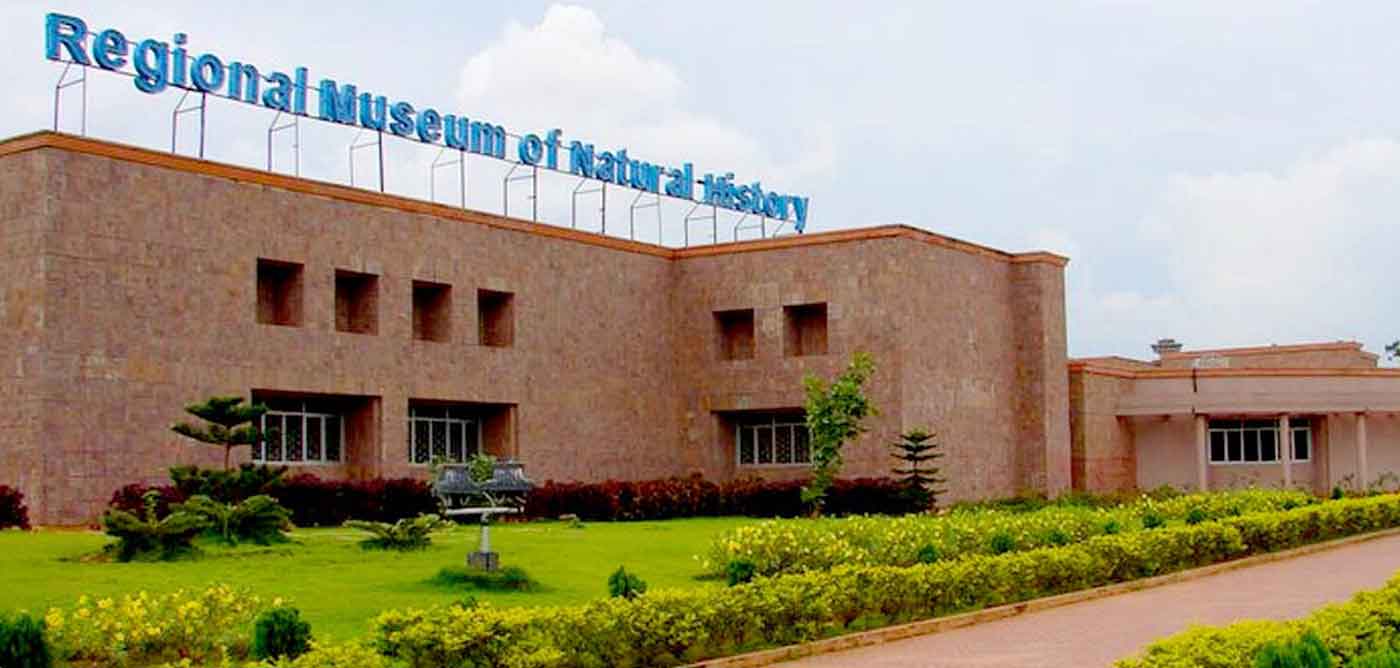
The Regional Museum of Natural History, Bhubaneswar is a museum in Bhubaneswar, Odisha, India with exhibits on plants, animals and geology of the eastern region of India. The Regional Museum of Natural History at Bhubaneswar, was inaugurated in 2004.It was undertaken by the Ministry of Environment and Forests, Government of India. The museum is located near Acharaya Vihar Square on Sachivalaya Marg, Bhubaneswar. The museum exhibits plants, animals and geology of the Odisha, the Eastern and north-eastern India and the Andaman and Nicobar Islands of India.The galleries emphasize the conservation of nature and natural resources while depicting ecological interrelationship among plants and animals. Visually challenged students can feel the exhibits of animals on the premises. The museum provides an extracurricular activity for schools and promotes environmental awareness. A skeleton of baleen whale has been installed in the museum, which is supposed to be largest for any museum in India. Since May, 2017 this museum became one of the first museums in india to generate and use green energy though solar power production. This grid connected solar power plant is of roof type and generate 189 KvA electricity per month which makes it largest rooftop solar power plant in Odisha.
Realising that, as a National Institution, the National Museum of Natural History has an obligation to the entire country in respect of creating environment awareness and promoting conservation education, itwas decided during the VII Plan to have regional offices in the form of Regional Museum of Natural His-tory (RMNH) in different parts of the country in a phased manner so as to extend the activities of NMNH at regional and state levels.
Accordingly, the first such Regional office was initiated in the 'Southern Region' in 1995 at Mysore (Kar-nataka State). The second one was developed for the ' Central Region' in Bhopal (Madhya Pradesh) in 1997.The third Regional Museum in the 'Eastern Region' of the country was established in Bhubaneswar (Orissa) and operationalised in 2004. The fourth Regional office was established in “Western Region” in Sawai Madhopur in 2008 and it is expected to be operational shortly. A fifth Regional office in “North-Eastern Region” is expected to be established soon in Gangtok (Sikkim).
Regional Museum of Natural History, Bhubaneswar, is an Eastern regional centre of the National Museum of Natural History, under the Ministry of Environment and Forests, Govt. of India, New Delhi.
The goal of the museum is to impart non-formal environmental education to the public in general and the student community in particular in order to inculcate the awareness about the importance of flora, fauna and subsequent conservation of our natural resources.
Situated in the temple city of Bhubaneswar, Orissa, near Acharya Vihar Square on National Highway 5, this museum is yet another destination and a meaningful visit for students, adults and family members from all sections of society.
An aesthetically designed building and landscape sets the tone for an informal and joyful learning experience about our natural heritage and the importance of its conservation. It offers an exciting opportunity for hands on and minds on activity to interact with the exhibits under recreated environment to attain the knowledge about the harmony of plants and animals and their interrelationships in nature.
The museum attempts to showcase the vibrant biodiversity of Orissa, the NorthEast and the Andaman and Nicobar Islands depicting their richness under one roof thereby making people aware of the natural heritage of the state and beyond. Extending the excellent facilities to the masses in order to make environmental education to the common man is the driving force behind the creation of the museum. It attempts to strike a chord with the common man and appraise him of the importance of the natural bio resources and their conservation. After all, the survival of the common man is dependent of the conservation of our natural heritage.